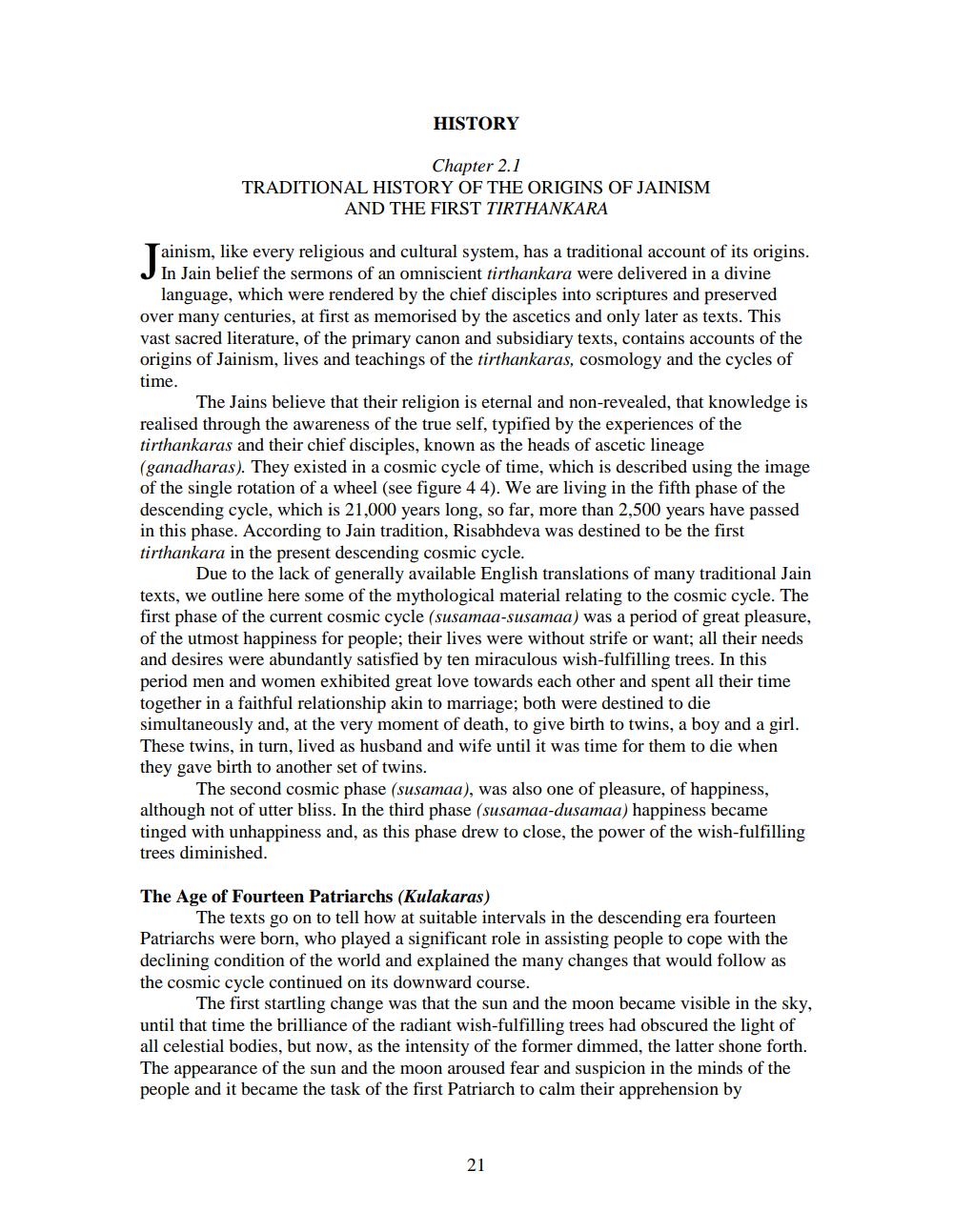________________
HISTORY
Chapter 2.1
TRADITIONAL HISTORY OF THE ORIGINS OF JAINISM AND THE FIRST TIRTHANKARA
ainism, like every religious and cultural system, has a traditional account of its origins.
an were in a
language, which were rendered by the chief disciples into scriptures and preserved over many centuries, at first as memorised by the ascetics and only later as texts. This vast sacred literature, of the primary canon and subsidiary texts, contains accounts of the origins of Jainism, lives and teachings of the tirthankaras, cosmology and the cycles of time.
The Jains believe that their religion is eternal and non-revealed, that knowledge is realised through the awareness of the true self, typified by the experiences of the tirthankaras and their chief disciples, known as the heads of ascetic lineage (ganadharas). They existed in a cosmic cycle of time, which is described using the image of the single rotation of a wheel (see figure 4 4). We are living in the fifth phase of the descending cycle, which is 21,000 years long, so far, more than 2,500 years have passed in this phase. According to Jain tradition, Risabhdeva was destined to be the first tirthankara in the present descending cosmic cycle.
Due to the lack of generally available English translations of many traditional Jain texts, we outline here some of the mythological material relating to the cosmic cycle. The first phase of the current cosmic cycle (susamaa-susamaa) was a period of great pleasure, of the utmost happiness for people; their lives were without strife or want; all their needs and desires were abundantly satisfied by ten miraculous wish-fulfilling trees. In this period men and women exhibited great love towards each other and spent all their time together in a faithful relationship akin to marriage; both were destined to die simultaneously and, at the very moment of death, to give birth to twins, a boy and a girl. These twins, in turn, lived as husband and wife until it was time for them to die when they gave birth to another set of twins.
The second cosmic phase (susamaa), was also one of pleasure, of happiness, although not of utter bliss. In the third phase (susamaa-dusamaa) happiness became tinged with unhappiness and, as this phase drew to close, the power of the wish-fulfilling trees diminished.
The Age of Fourteen Patriarchs (Kulakaras)
The texts go on to tell how at suitable intervals in the descending era fourteen Patriarchs were born, who played a significant role in assisting people to cope with the declining condition of the world and explained the many changes that would follow as the cosmic cycle continued on its downward course.
The first startling change was that the sun and the moon became visible in the sky, until that time the brilliance of the radiant wish-fulfilling trees had obscured the light of all celestial bodies, but now, as the intensity of the former dimmed, the latter shone forth. The appearance of the sun and the moon aroused fear and suspicion in the minds of the people and it became the task of the first Patriarch to calm their apprehension by
21




